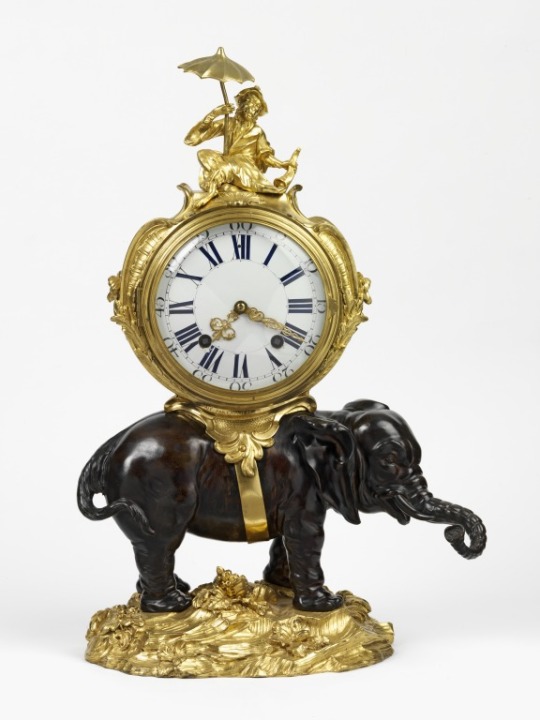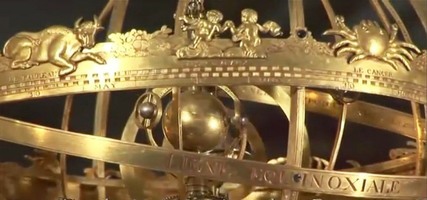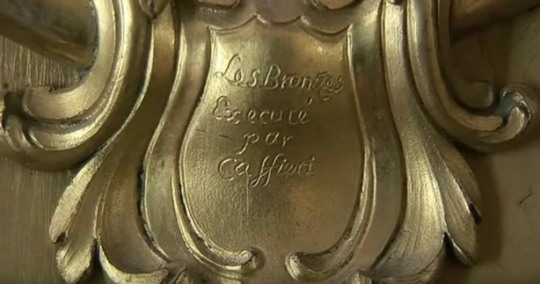#philippe caffieri
Text






Louvre-Lens : il y a une expo : “Mondes souterrains : 20.000 Lieux sous la terre”. la suite et fin.
pendentif, Saint Janvier bénissant et tenant des burettes - Naples, XVIIIe s.
Fac-simile (bon, on s'y attendait) du ''Régent'', diamant de la Couronne
Johann Daniel Mayer - coupe en argent, jaspe, rubis, or… - 1660
Philippe Caffieri - coupe en porphyre - 1750
les 2 derniers : bustes d'empereurs romains (dont la tête est en jaspe, calcédoine, agate, cornaline, cristal de roche,...) - Rome, 1750
#louvre-lens#expo#mondes souterrains#20.000 lieux sous la terre#gemme#bijou#cristal#pierre précieuse#le régent#diamant#saint janvier#johann daniel mayer#jaspe#rubis#philippe caffieri#porphyre#roche#empereur romain#rome antique
4 notes
·
View notes
Photo

Louis XV
Ormolu Chenets (1770)
attrib. Philippe Caffieri
(via Christies)
0 notes
Text

A PAIR OF LATE LOUIS XV ORMOLU CHENETS
ATTRIBUTED TO PHILIPPE CAFFIERI, CIRCA 1770
Modelled as a seated dog and cat respectively, each on a draped and panelled base applied with laurel branches, raised on spirally-fluted toupie feet.
Christie’s
8 notes
·
View notes
Text

▪︎Table clock.
Place of origin: Paris
Date: 1742-1745
Artist/Maker: Caffieri, Philippe and Caffiéri, Jacques
Medium: Gilded bronze, the dial possibly re-enamelled in the nineteenth century; cast bronze elephant.
#18th century#18th century decorative arts#18th century art#18th century clock#clock#table clock#elephant#paris#1742#1745
35 notes
·
View notes
Photo



Pendule astronomique aussi appelée pendule de Louis XV, conservée au château de Versailles. Chef d’oeuvre d’horlogerie et d’ornementation, elle est le fruit du travail de quatre spécialistes : Claude Siméo Passemant (horloger), Lousi Dauthiau (horloger), Jacques et Philippe Caffieri, sculpteurs et bronziers. L’horloge a la capacité d’indiquer l’heure, la date (pouvant aller jusqu’à l’année 9999), l’alignement des planètes ainsi que les années bissextiles.
1 note
·
View note
Photo

CAFFIÉRI, Philippe
French bronze-caster (b. 1714, Paris, d. 1774, Paris)
The Chariot of Apollo
c. 1767
Gilt bronze, height 45 cm
Wallace Collection, London
Bronze-caster, collector and designer, part of a French family of artists of Italian descent. He was the eldest son of Jacques Caffiéri, one of the most celebrated bronzeworkers in the reign of Louis XV. His younger brother was Jean-Jacques Caffiéri, one of the most eminent sculptors of the second half of the 18th century, producing monumental works as well as small-scale allegorical groups and some of the liveliest and most elegant portrait busts of the time.
Philippe succeeded his mother as Marchand Doreur Privilégié du Roi in 1743. Trained by his father, and an associate in his business from 1747, he continued the workshop and succeeded his father as Sculpteur et Ciseleur Ordinaire des Bâtiments du Roi. In 1754 he was admitted to the Académie de Saint-Luc, Paris, and on 16 January 1756 became a master bronze-caster and chaser. Under his direction the Caffiéri workshop continued to prosper by working for a prestigious clientele, and Philippe became wealthy. He was able to form a collection that included drawings and paintings by Rembrandt, David Teniers the Younger, Jean-Baptiste Oudry, Chardin, François de Troy, Louis Lagrenée, Boucher and Jean-Honoré Fragonard and sculptures by Jacques-François-Joseph de Saly, Etienne-Maurice Falconet and Michel-Ange Challe.
This elaborate bronze appropriately surmounts a long-case clock by Nicolas Petit and J-J Lepaute; Apollo's chariot pulls the sun across the sky marking the passage of the day. The design recalls the celebrated gilt-lead figure of 1671 by Tuby in the Bassin of Apollo at Versailles.
4 notes
·
View notes